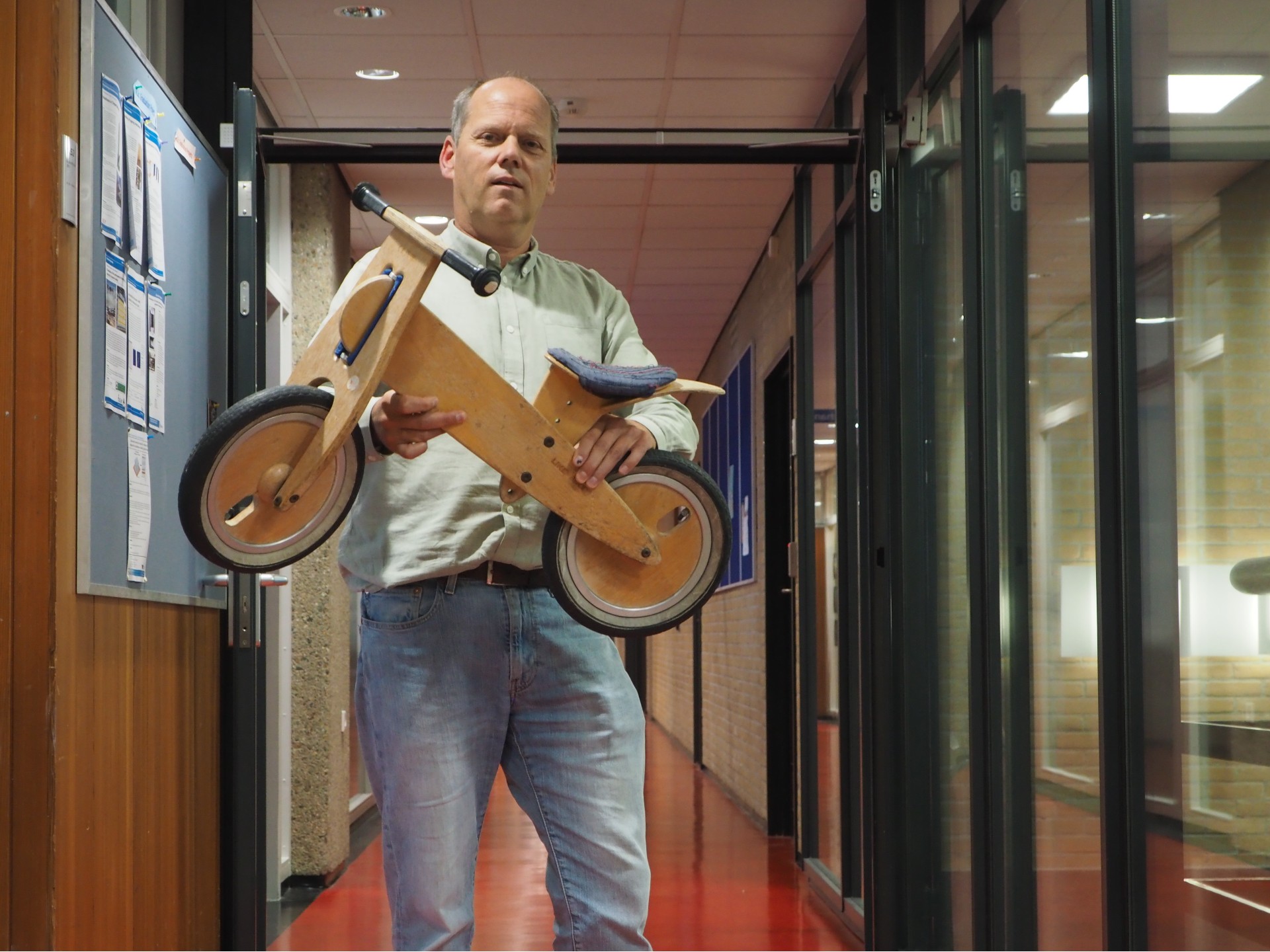Just as he used to teach his children to cycle without side wheels, Rogier Wolfert is now teaching his students to make technical designs in a social context.
After ten years of development, Rogier Wolfert released his design method Open Design System this year. (Photo: Jos Wassink)
Design processes with many stakeholders often get stuck because of the gap between what people want and what is technically feasible, says Professor Rogier Wolfert. His Engineering Asset Management department has worked on a design methodology that combines technical possibilities with the wishes of stakeholders for about 10 years. In his book Open Design System, published last September, Wolfert introduces a participatory design method called Odesys alongside the educational Open Design Learning (ODL) concept. ODL is part of master’s programmes civil engineering and construction management & engineering at the Faculty of Civil Engineering and Geosciences.
What kind of problems does your design method provide solutions for?
“I would say for any problem that has both a social and human, and environmental component. The method also involves a physical element as material objects have to be made within a given setting. This may be subject to conflicting interests. Consider the design of parking facilities in a neighbourhood where different people live and work and where there are several stakeholders, each with their own preferences. Another example is the design of an offshore wind farm where the project developer has different interests to those of the contractor who has to install it.”
Preferendus, a ‘design engine’, seems to have a key role in Odesys. What is it?
“Preferendus is a computer programme that can present a socio-technical design problem in mathematical terms. Preferendus allows stakeholders’ interests, constraints and goals to be captured transparently. You can think of it as a mirror that reflects the interests the group has put on the table. Preferendus uses these to calculate the best-fit solution under the given circumstances. In some cases, the outcome is that Preferendus determines that the interests are so conflicting that no solution can be found. Then there must be renegotiation.”
Does Preferendus automatically produce the optimal solution?
“Preferendus does not replace the human design process but supports it. It produces a synthesised solution of what people say they want and what the system can offer. When people see the outcome, they often experience some kind of moment of awareness and enter the next cycle involving additional needs or adjusted priorities. This is thus a multi-step iterative process leading either to a compromise where everyone has an equal stake, or towards the best-fit solution where the wishes of some of the stakeholders are met while those of others are not. But it’s still the alternative that best fits the input of the whole group.”
I always think of the Multi-Actor Systems department at the Faculty of Technology, Policy & Management when I think of these kinds of socio-technical issues. How does your approach differ from that at TPM?
“We work with an integrative model that brings together what people want and what the system can deliver. At TPM, the focus is often on what people want as a social process. But there is no point in designing something that people want if it is not technically feasible. This is why Odesys integrates what people want and what the system can do. In large Department of Public Works construction projects, for example, cost, noise and traffic pollution count equally. Odesys builds on the preference function modelling by Jonathan Barzilai, developed at the end of the last century. We transformed his evaluation theory into a design system that focuses on the individual preference of each person rather than on costs and benefits to arrive at the best fitting and technically workable solution.”
You argue that this design method prepares students for professional practice. How does it do this?
“Besides the Odesys design method, we have also developed an educational concept called Open Design Learning, ODL for short. It is a way of learning to solve problems independently. I always show my students this little bicycle which I used to teach all four of my children to cycle without training wheels. I could not show them how to cycle. All I could do was pique their interest and provide them with an environment in which they could practice safely, and we were always there, like the swimming instructor with the big hook on the shore in the old days. He won’t let you drown. At ODL, we use constructivism to create a safe environment in which students learn to solve design problems creatively and independently. This is very different from instructivism where you actually copy someone else’s solution. ODL is not a one-off trick to imitate that is quickly forgotten afterwards. It is a method that students eventually own and use to tackle design problems that they later come up against in practice. ODL is an approach that stays with you once you internalise it. Just like cycling.”
- Find out more about Odesys and Open Design Learning at odesys.nl
- The new open e-book is available at ebooks.iospress.co.uk/volume/open-design-systems
Do you have a question or comment about this article?
j.w.wassink@tudelft.nl


Comments are closed.